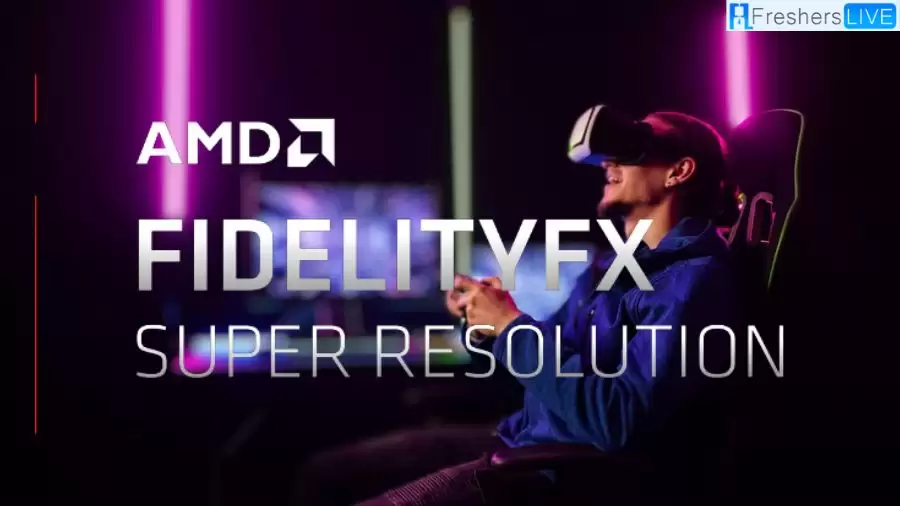When is FSR 3 Coming Out? FSR3 Release Date?
Updated Sep 05, 2023

What is FidelityFX Super Resolution 3.0?
AMD FidelityFX Super Resolution 3.0 (FSR 3) is an upcoming technology that makes video games look better and run smoother on your computer. It does this by using clever tricks to create more detailed pictures in games. FSR 3 makes these pictures by not only making the existing ones clearer but also by adding new pictures in between them.
This makes games run faster and look sharper. AMD is working on making FSR 3 even better than the previous versions, aiming to double the performance and make games look even more amazing. They're also careful to avoid any weird visual glitches. FSR 3 is expected to come out soon and will work with some popular games.
When is FSR 3 Coming Out?
FSR 3, also known as FidelityFX 3.0 with Fluid Motion frames technology, is set to be released in the early fall, with a likely launch in September 2023. This lines up with previous information that suggested it would come out around the same time. FSR 3 is AMD's answer to NVIDIA's DLSS 3 Frame Generation technology, and it aims to boost gaming performance by creating extra frames using artificial intelligence.
It will work with various types of GPUs, not just AMD's, including gaming consoles like the Xbox Series X. Initially, FSR 3 will support 12 games, with more expected to receive patches in the fall, and AMD plans to expand its support to "thousands of games" in the future. Overall, gamers are excited about FSR 3 due to its wide compatibility and promised improvements in frame rates.
Will FSR 3 Work on 6000 Series?
Yes, FSR 3 will work with AMD Radeon™ RX 6000 Series graphics cards. Gamers using these graphics cards can enjoy the benefits of FSR 3 when playing supported games. Additionally, they have the option to use AMD Radeon™ Anti-Lag technology to further reduce latency in supported games that use frame generation, such as FSR 3 games like Forspoken.
However, Anti-Lag is available for use in all games, providing a smoother gaming experience. So, whether you have an AMD Radeon™ RX 7000 Series or a lower-end Radeon™ RX 6000 Series GPU, FSR 3 is compatible and offers improved performance.
Latest Features of FSR 3
The main improvement in AMD FSR 3 compared to FSR 2 is the addition of something called "frame generation." This technology uses advanced methods like AMD Fluid Motion Frames and data about how things move in the game to create extra high-quality frames.
This helps boost the game's performance and make it run even smoother, especially in tough situations like playing at 4K resolution with lots of fancy graphics effects turned on or when your computer's processor is working hard. AMD has also made sure that this frame generation doesn't mess up the in-game menus or interface. FSR 3 also comes with improved upscaling technology from FSR 2 and a new "Native AA" quality mode. But the main focus is on making games run better with this frame generation tech.
FSR Performance Comparison
In FSR "Performance" mode on AMD Radeon™ RX 6000 Series graphics cards with FSR-supported games, you can expect a significant boost in performance compared to having FSR turned off, achieving approximately 2.5 times the performance at 4K resolution. Here are some examples of the performance improvement in select games:
Resident Evil™ Village (“Max” preset):
FSR "Performance" Mode
Up to 300 FPS
Up to 279 FPS
Up to 193 FPS
Up to 128 FPS
FSR OFF
128 FPS
117 FPS
74 FPS
114 FPS
FSR Mode
Radeon™ RX 6900 XT 4K
Radeon™ RX 6800 XT 4K
Radeon™ RX 6700 XT 4K
Radeon™ RX 6600 XT 1440p
Deathloop® (“Ultra” preset with raytracing on):
FSR "Performance" Mode
Up to 119 FPS
Up to 112 FPS
Up to 83 FPS
Up to 54 FPS
FSR OFF
54 FPS
50 FPS
33 FPS
51 FPS
FSR Mode
Radeon™ RX 6900 XT 4K
Radeon™ RX 6800 XT 4K
Radeon™ RX 6700 XT 4K
Radeon™ RX 6600 XT 1440p
Far Cry® 6 (“Ultra” preset with raytracing on):
FSR "Performance" Mode
Up to 96 FPS
Up to 96 FPS
Up to 83 FPS
Up to 85 FPS
FSR OFF
67 FPS
63 FPS
43 FPS
56 FPS
FSR Mode
Radeon™ RX 6900 XT 4K
Radeon™ RX 6800 XT 4K
Radeon™ RX 6700 XT 4K
Radeon™ RX 6600 XT 1440p
FSR 3 Release Date
FSR 3, also known as FidelityFX 3.0 with Fluid Motion frames technology, is set to be released in the early fall, most likely in September 2023. This lines up with earlier information that hinted at a release in the same timeframe.
FSR 3 is AMD's answer to NVIDIA's DLSS 3 Frame Generation technology, and it uses artificial intelligence to make games run faster by adding extra frames. While it's similar to NVIDIA's tech, the details of how AMD's version works with different graphics cards are still not fully known.
When is FSR 3 Coming Out - FAQs
FSR 3 is expected to release in the early fall, likely in September 2023.
The key feature of FSR 3 is the addition of frame generation technology, enhancing gaming performance.
Yes, FSR 3 is compatible with a wide range of graphics cards, from integrated to ultra-enthusiast GPUs.
FSR 3 can provide up to 2.5 times the performance at 4K resolution in its "Performance" mode for FSR-supported games.
FSR 3 is designed to work with various GPUs, including AMD and NVIDIA graphics cards, as well as gaming consoles like the Xbox Series X.







